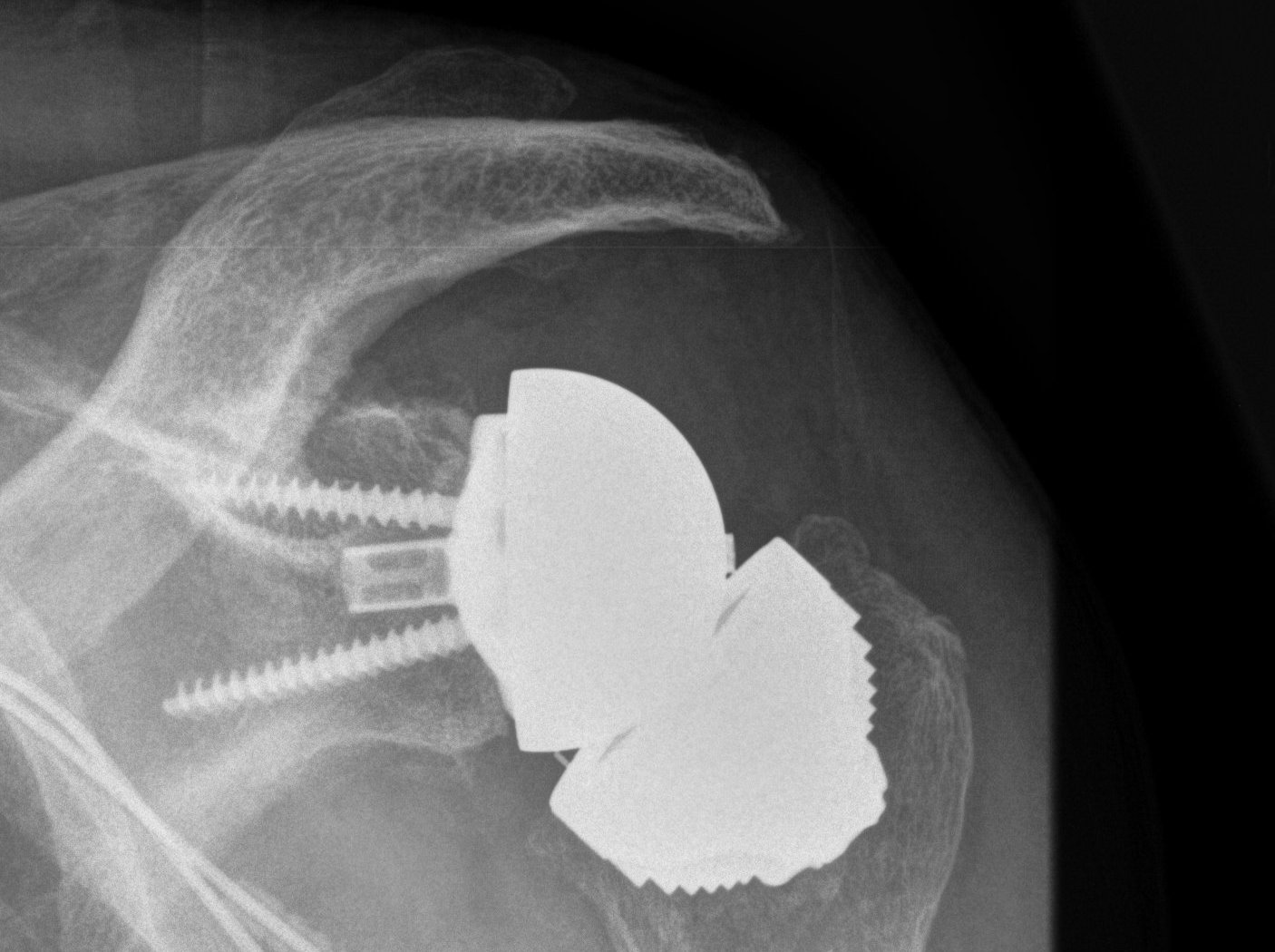Intraoperative glenoid fracture
Avoid by
- careful reaming and drilling osteoporotic bone
Management
1. Rotate metaglene
- use locking screws to stabilise glenoid
2. PA screws
- cannulated 4.0 mm screws
- inserted percutaneously from posterior
Haematomas
Great deal of dead space is created
- always use a drain
Nerve injuries
AXN / MCN
Thought to be more prevalent due to increase stretch of plexus compared with TSR
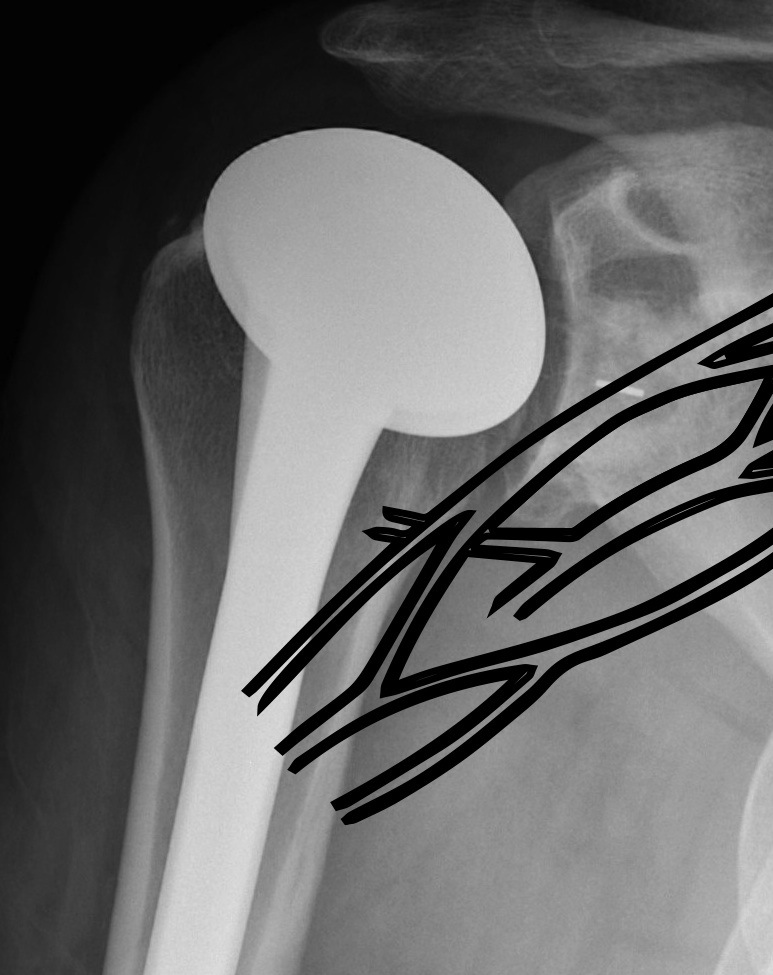
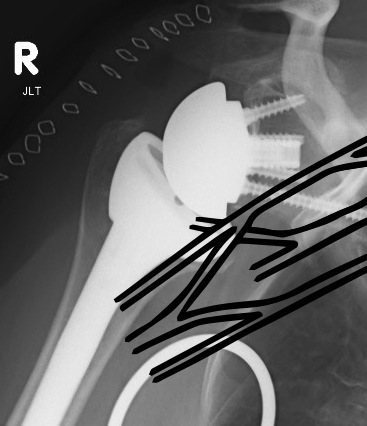
Infection
Sabesan et al Clin Orthop Research 2010
- 17 patients treated with 2 stage revision
- 1 recurrence of infection
- 5 dislocations
Inferior scapula notching
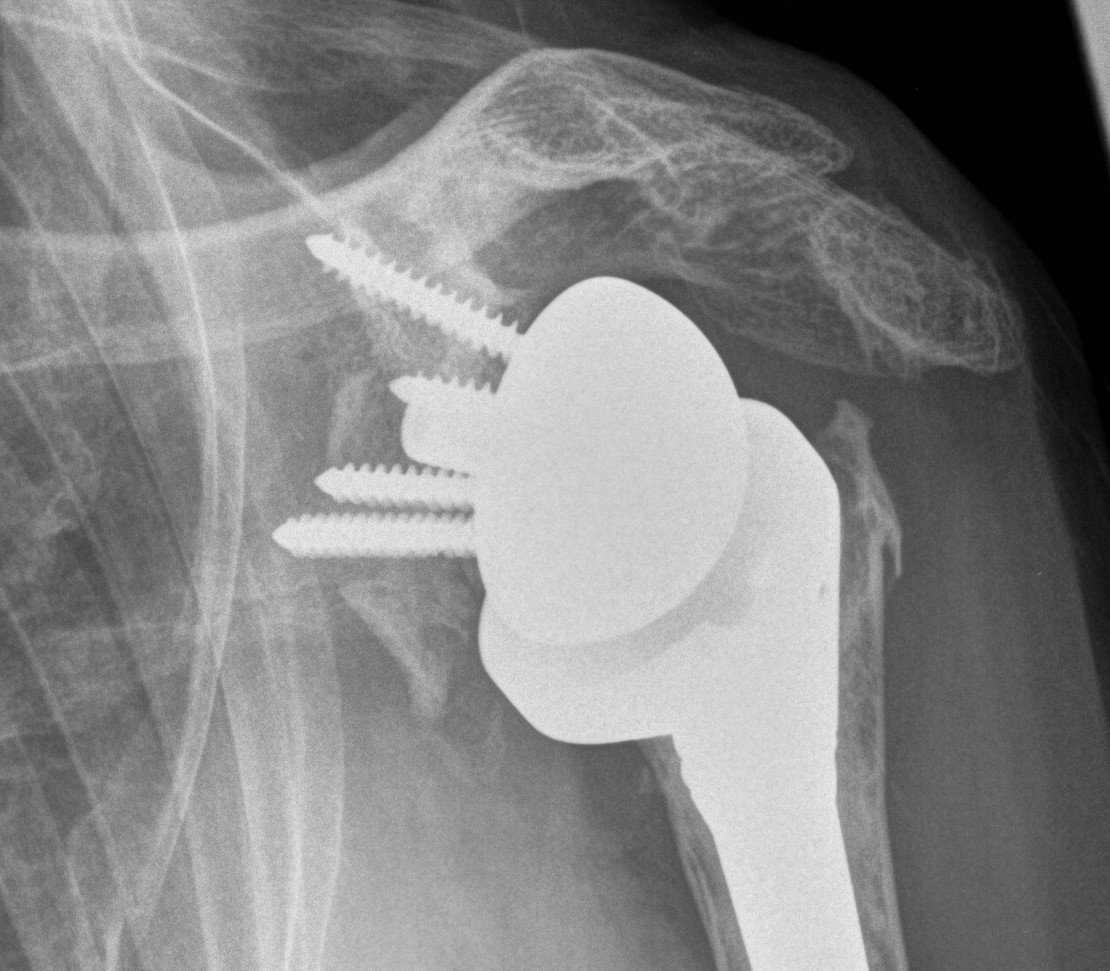
Cause
- metaglene not placed inferiorly enough
- humeral component impinges on scapular neck in adduction
Prevention
Inferior tilt / inferior translation / overhand
- place metaglene very inferior
- use eccentric glenoidspheres / overhang inferiorly
- lateralised glenosphere
Problem
- may be cause for development of late pain
Simovitch et al JBJS Am 2007
- 77 reverse Delta III shoulders
- 44% inferior glenoid notching
- anterior and posterior notching also occurred
- related to height of implantation of glenosphere +++
- less so to the prosthesis-scapular neck angle
- inferior scapula notching related to poorer clinical outcome
Loosening
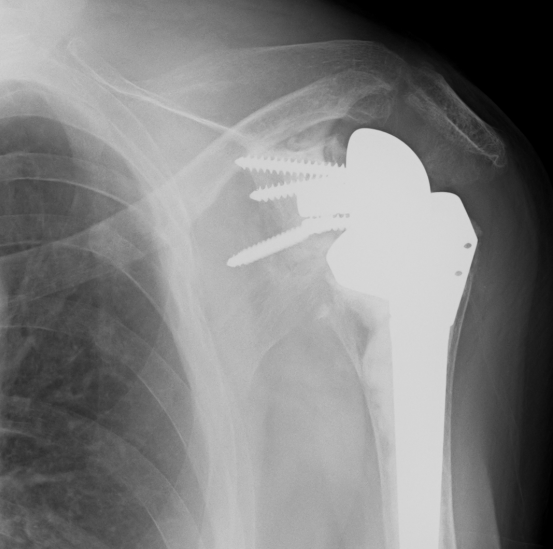
Dislocation
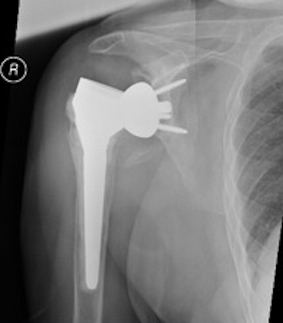
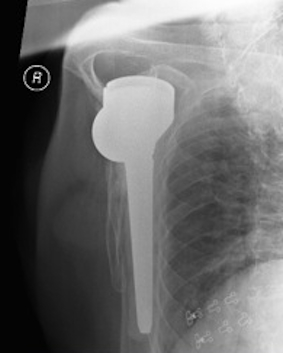
Acromial Stress Fracture
Probably due to overtightening
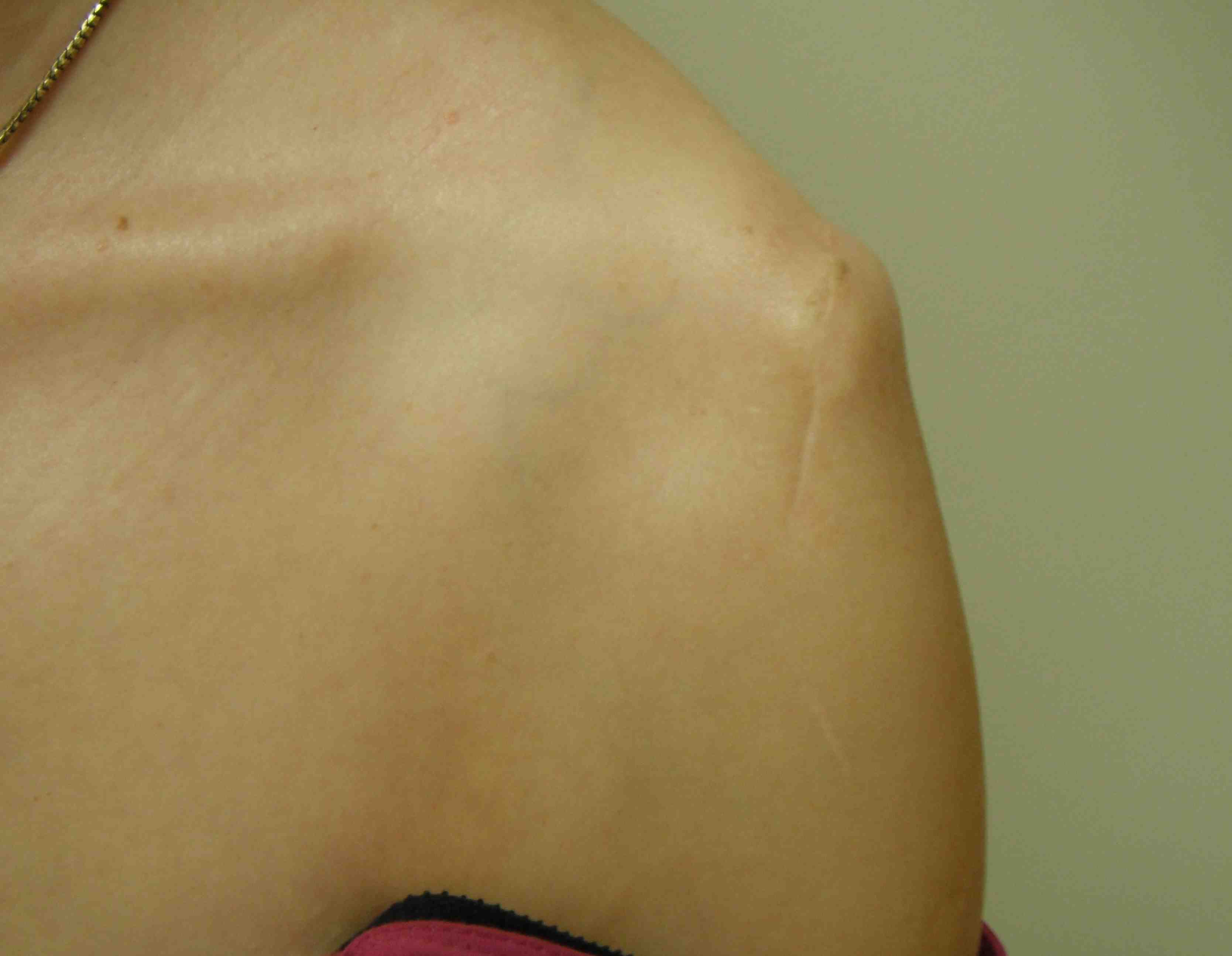
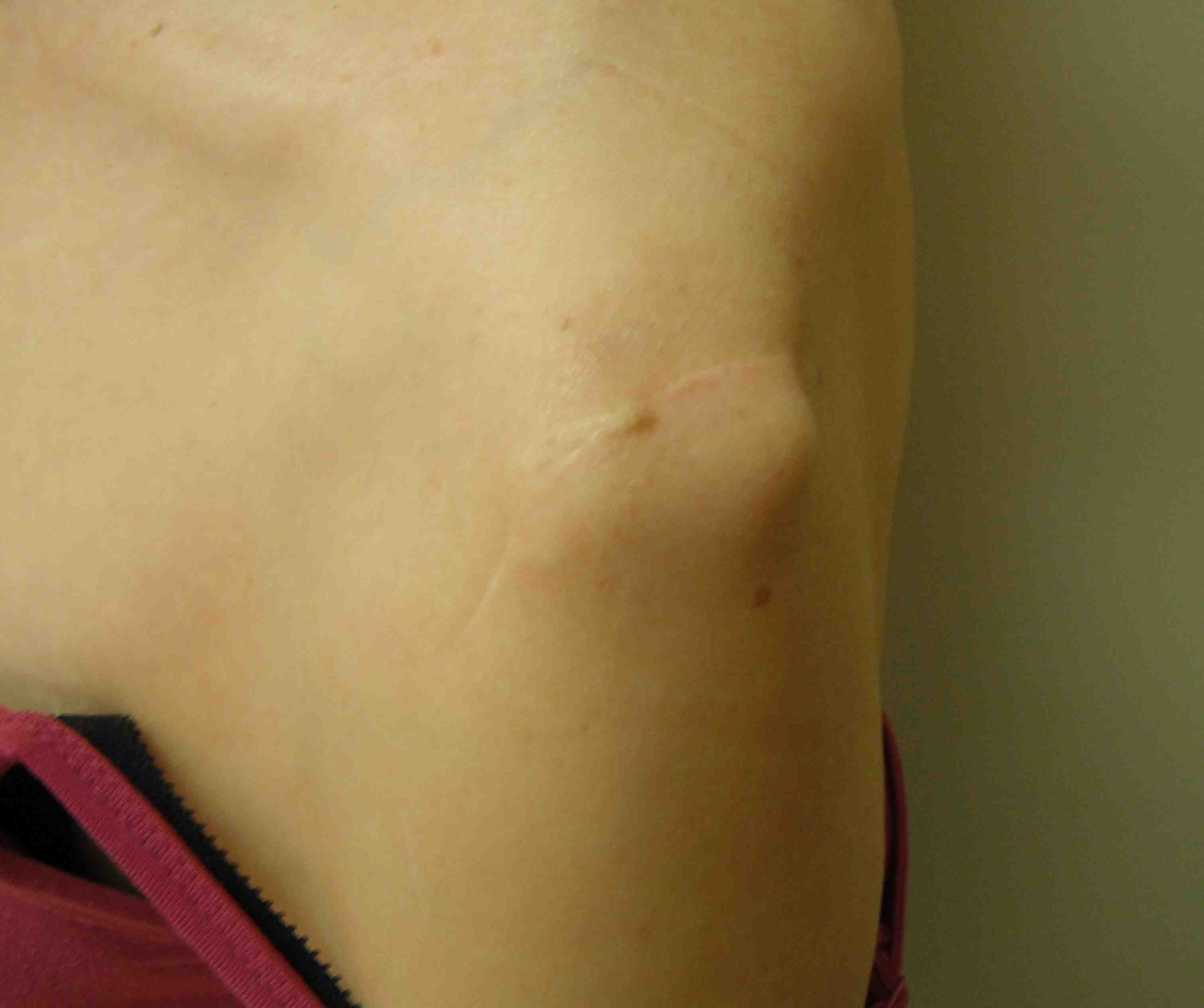
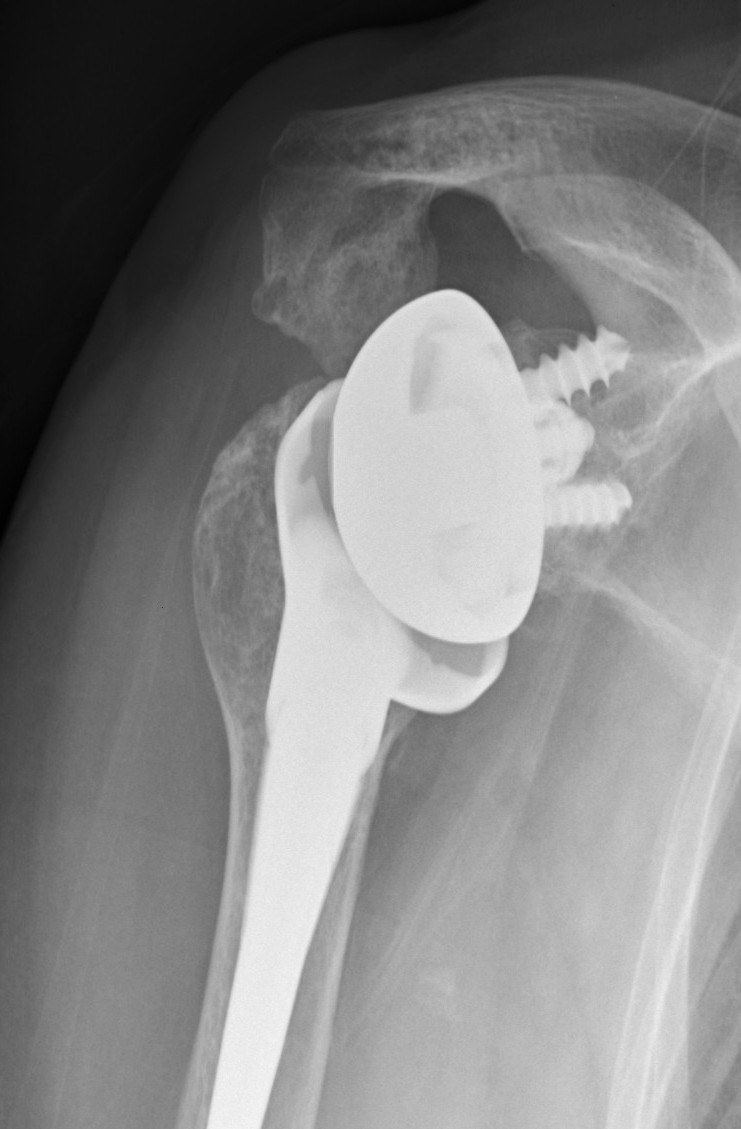
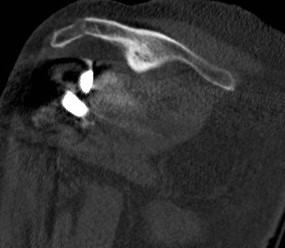
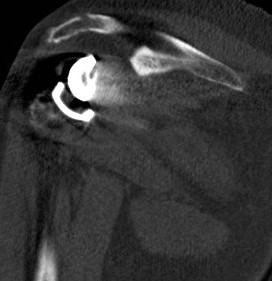
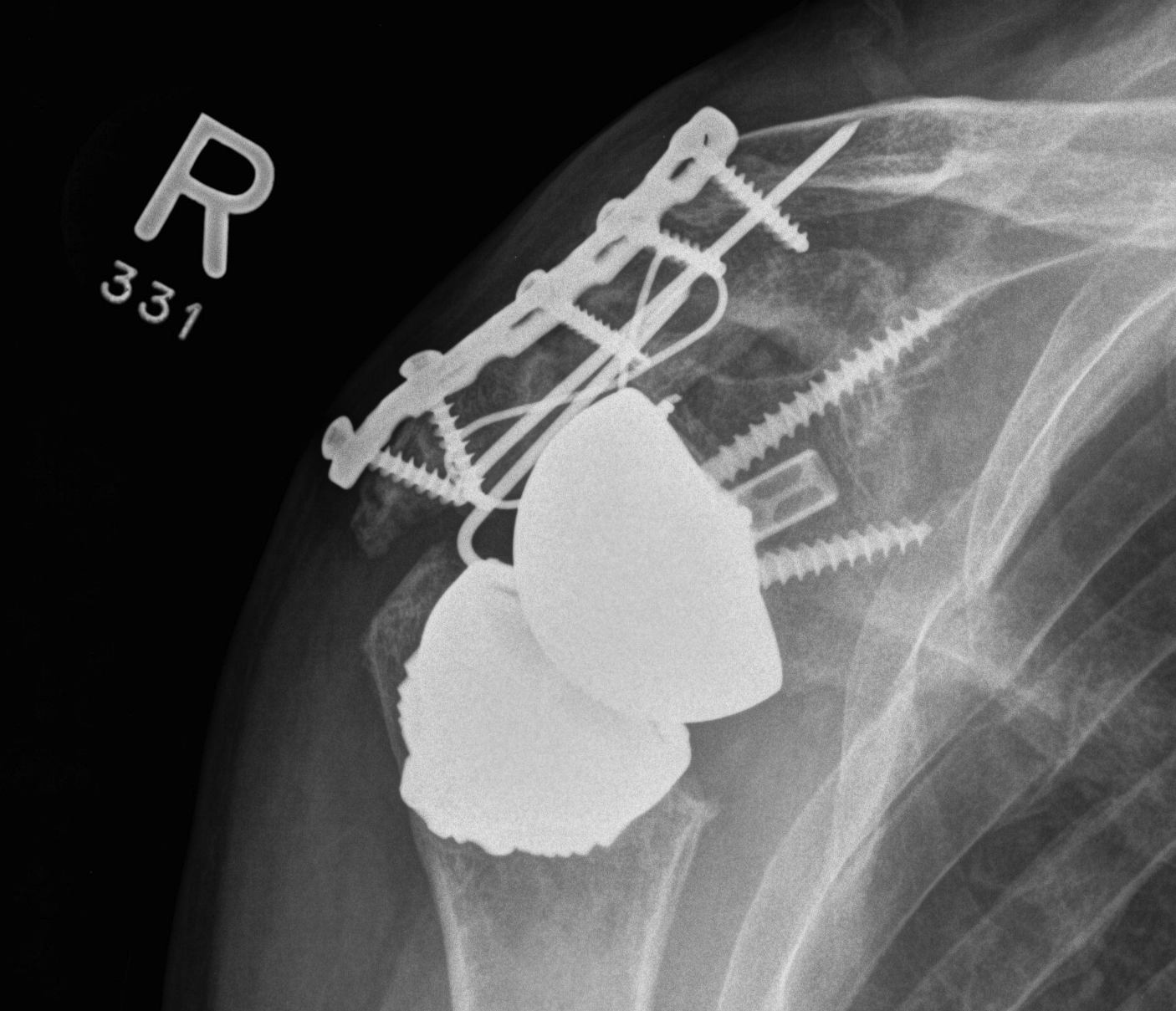
Glenosphere loosening from Metaglene
